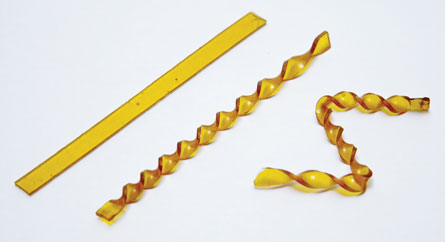- More than 2 years ago
A tough new plastic that’s easily healed if scratched or damaged could find use in products prone to getting beat up, such as paints or parts for cars and sailboats. What’s more, it can be ground up and recycled into completely new products like plastic molding for electronic devices or optical lenses.

By adding some extra ingredients to traditional epoxy resins and a dash of a zinc compound to help move the chemistry along, researchers made a material whose chemical bonds continually break and reform. At really high temperatures, the bonding switcheroo makes the material malleable, but the reactions are so sluggish at ordinary temperatures that the material’s shape is essentially fixed, resisting deformation, the researchers report in the Nov. 18 Science.
“They developed a unique and very powerful approach that will have a great deal of applications,” says polymer chemist Christopher Bowman of the University of Colorado at Boulder. “It’s quite exciting.”
Most plastics that are super durable — such as those used for kitchenware and some car parts — are molded into shape and then “cured,” turning them into one giant cross-linked molecule. The molecules of softer plastics, like those used in soda bottles, typically aren’t held together with these strong bonds and can be melted and reshaped. To get an in-between material, scientists led by Ludwik Leibler of France’s National Center for Scientific Research in Paris made a regular epoxy resin, the sort available at your local hardware store. Then the researchers added acids to the mix and used a zinc-based compound to help them interact.
The resulting material consists of a network of molecules, each holding hands with four others. These molecules are constantly switching up who they are holding hands with, but the number of bonded hands in the material always stays the same. When heated, this molecular hand swap speeds up; the number of switches that would take 100 years to complete at room temperature happen in a few seconds at 200 degrees Celsius, says Leibler.
The molecular flexibility means that at high temperatures the material can easily be remolded. Full-scale injection molding works, but so does shaping or repairing it with a hand-held hot air blower. And depending on the amount of hardeners and other ingredients, the chemistry can yield very hard plastics or ones with a more rubbery feel.
“You can do anything you want,” Leibler says. “You can work it like wood, you can make big parts if you want, and the beauty of it is all of the ingredients are things that are already used in composites.”






